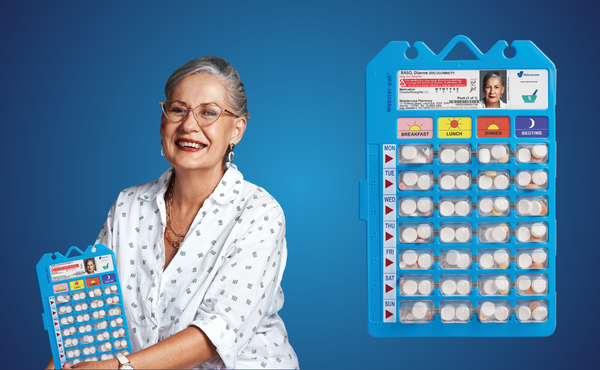Simple Solutions Supporting Those Living with Arthritis

“Right Medication, Right Dose, at the Right Time” has Never Been so Assured
December 19, 2022
ACCPA Aged Care Today Magazine – Autumn 2023
March 28, 2023Simple Solutions Supporting Those Living with Arthritis
Almost four million or about 1 in 6 Australians have a form of arthritis that complicates how they live their lives every day. By 2030, it is projected there will be 5.4 million Australians with arthritis.
Treatments vary depending on disease type and severity, but medication to relieve pain is commonly used and sought. However, there are many barriers to medication adherence and one that is often overlooked is the ability of the patient to easily open medication packaging.
Many people who take multiple medications, such as those with arthritis, often use medication management tools, such as a Webster-pak® to help them adhere to their regimens. But if the user has arthritis, they may find the packaging difficult to open. It can compromise their regular access to pain-relieving medication.
Founder of Webstercare and the inventor of the Webster-pak, Gerard Stevens AM understood these challenges when he invented two devices to specifically help people with dexterity issues such as people with arthritis.
Medication requires secure and safe storage so the materials used to perfectly seal them into blister packs needs to be of high and robust quality,” he said.
But people can sometimes have trouble pushing through a blister pack to access pills due to the build-up of pneumatic pressure within the plastic blister itself.
We went about improving this situation and developed a simple innovation, called a concertina blister, that reduces that pressure. Now all Webstercare medication adherence tools such as the Webster-pak are easier to open because of this innovation,” he said.
The patented* Concertina blisters come in a range of sizes and are ideally suited to self-medicating clients and busy nursing staff. Each blister is connected to its neighbours by twin air channels.
The air channels ‘act like a valve’. As you push down, air is expelled through the channels into the next blister, reducing the pressure needed to open the pack by 46%. The small and medium sizes also have collapsing side ridges. They allow the blister to compress like a mini accordion to make opening it even easier, explains Mr Stevens.
But sometimes extra frailty, pain or severe dexterity issues can hamper access even further. For such people, Mr Stevens developed the Pil-Bob® – a simple device that is easy and intuitive to use. The Pil-Bob® has been designed to make the removal of medication from Webster-pak® systems even easier and more hygienic.
When I first conceived the idea of the Pil-Bob®, its first iteration was just a piece of PVC pipe with a base and plastic serrated tongue attached. I gave it to my late mother, who was using a Webster-pak, and asked her what she thought it was for.
Without prompting, she punctured the blister with the serrated tongue, wiggled it and let the pills drop into the cup. For me it was the perfect demonstration of proof of concept and we went full steam ahead to manufacture the Pil-Bob. It’s now used around the world,” he said.
The Pil-Bob® is ideal for individuals who suffer from arthritis, as well as those with poor eyesight or dexterity. It is suitable for aged care staff, self-medicating residents and carers helping people to administer medication.
There is also a Cytotoxic Pil-Bob®, used specifically to remove cytotoxic medications from Webster-pak® systems and help reduce the risk of cross contamination between medications and users.
To learn more about the Pil-Bob invention and other Webstercare medication adherence systems click the below.



